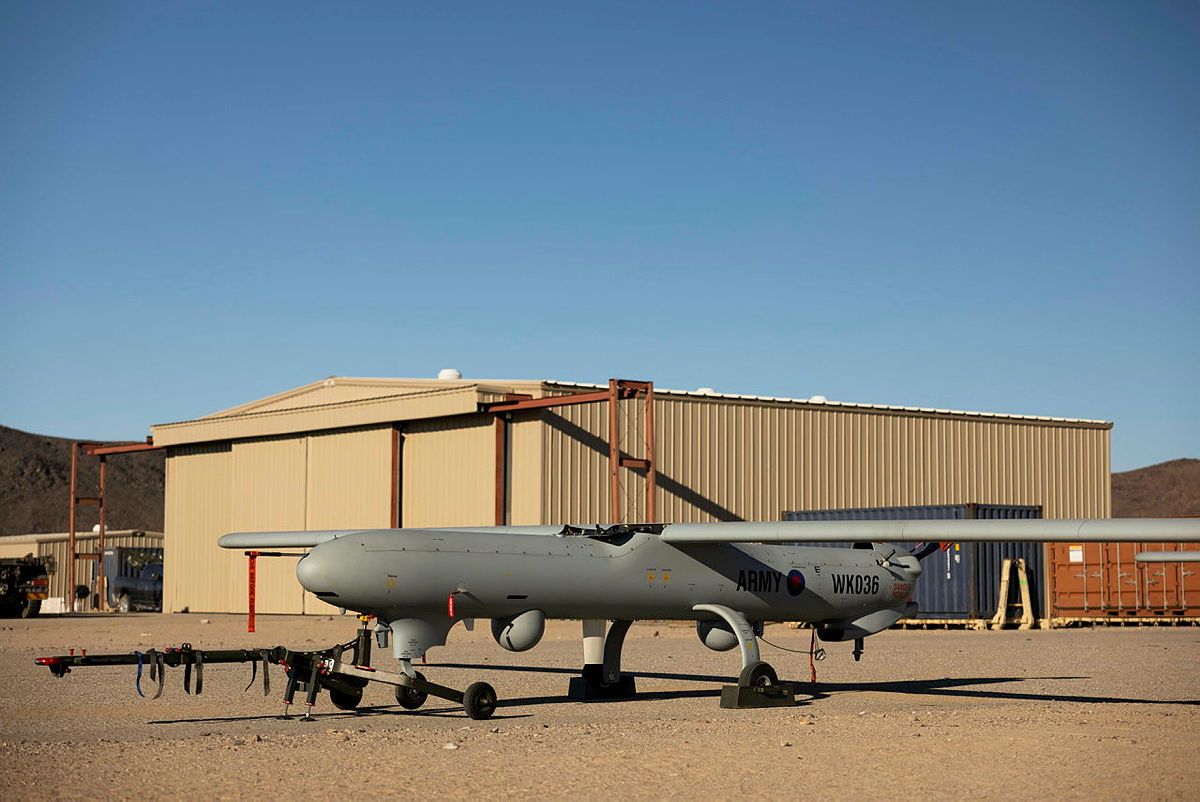UK plans Watchkeeper replacement, outlines initial requirements
- Europe
- News
- Land

The MoD is looking for a new persistent-surveillance UAS that will reach minimum deployable capability this year.
The UK Ministry of Defence (MoD) released a preliminary market engagement notice regarding the replacement of the Watchkeeper uncrewed aircraft system (UAS) under project Corvus on 15 April.
Project Corvus is intended to fulfil the British Army’s future Land Tactical Deep Find 24-hour surveillance requirement.
Regarding the specific capability required, the MoD seeks a solution that “must be of a high readiness level, be technologically agile, and capable of undergoing spiral development in future years to meet continuously evolving requirements”, the notice stipulates.
The opportunity is listed under two task lines, one valued at approximately GBP130 million and another at around GBP156 million, the notice states.
Task line one encompasses a five-year contract starting in December 2025, with the second task representing an extension contract from December 2030 to December 2035.
The requirement
As part of its nine initial requirements, the MoD has described a need for a persistent intelligence, surveillance, target acquisition, and reconnaissance (ISTAR) system that can detect, recognise, identify, track, and designate land and maritime targets in real time.
It must be capable of low-latency, secure data sharing, and be able to operate in global navigation satellite system (GNSS) denied environments.
The notice mentions the possibility of down selecting the capability through live demonstrations as part of a competitive process.
Replacing Watchkeeper
Replacing Watchkeeper was first announced by the Secretary of State for Defence, John Healey, in a speech to the House of Commons in November.
In that speech, Healey described the 46 Watchkeeper Mk 1 UASs as “14-year-old army drones that technology has overtaken”, likely referring to the rapid evolution in UAS technology seen amid the war in Ukraine.
Watchkeeper was built in the UK by Thales and first entered service in 2010. The system was intended to fulfil the Army’s Land Tactical Deep Find capability, as a persistent surveillance UAS.
During service, Watchkeeper accumulated 4,000 hours, with notable use in Afghanistan. It had a 77-knot cruise speed, was capable of reaching an altitude of 16,000ft, and had a range of up to 150km.
Enjoy reading this article? Click here to read more about our upcoming DSEI membership offering...
Tags
- capability
- capable
- december
- defence
- initial
- land
- looking
- mod
- new
- notice
- outlines
- persistentsurveillance
- plans
- project
- regarding
- replacement
- requirements
- surveillance
- system
- task
- uas
- uk
- under
- watchkeeper
Providing impartial insights and news on defence, focusing on actionable opportunities.
-
The move follows several big spending commitments on defence in Germany.
-
The funding will support dozens of projects from AI to air combat.
-
Solutions are needed that focus on five key themes, two of which are related to drones.


)
)
)
